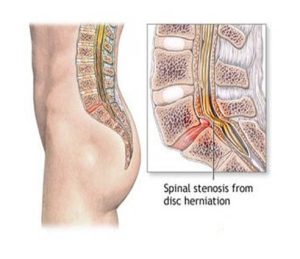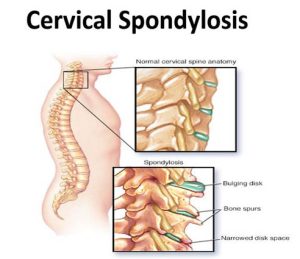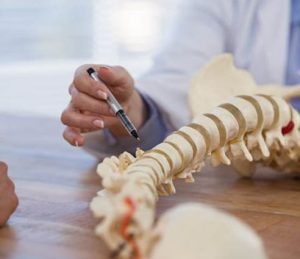Spondylosis is a general term for the wear and tear of the spine. It is a type of osteoarthritis that affects the joints and discs of the spine. The most common areas affected by spondylosis are the neck (cervical spine) and the lower back (lumbar spine).
Spondylosis is a degenerative condition, which means it gets worse over time. There is no cure for spondylosis, but there are treatments that can help manage the pain and other symptoms.
Causes of Spondylosis
 Spondylosis is caused by the wear and tear of the spine. This can be caused by a number of factors, including:
Spondylosis is caused by the wear and tear of the spine. This can be caused by a number of factors, including:
- Age: Spondylosis is most common in people over the age of 50.
- Genetics: Some people are more likely to develop spondylosis than others.
- Occupation: Jobs that require a lot of lifting or bending can put stress on the spine and increase the risk of spondylosis.
- Poor posture: Poor posture can put strain on the spine and accelerate the wear and tear process.
- Injury: Injuries to the spine can also increase the risk of spondylosis.
Symptoms of Spondylosis
 The symptoms of spondylosis can vary depending on the location of the affected area. Some common symptoms of spondylosis include:
The symptoms of spondylosis can vary depending on the location of the affected area. Some common symptoms of spondylosis include:
- Pain: This is the most common symptom of spondylosis. The pain can be mild or severe, and it may be constant or come and go.
- Stiffness: The spine may feel stiff, especially in the morning or after sitting for a long period.
- Loss of mobility: The range of motion in the spine may be reduced.
- Muscle spasms: The muscles around the spine may go into spasm, which can cause pain and stiffness.
- Headaches: Cervical spondylosis can cause headaches, especially at the back of the head.
- Numbness or tingling: If a nerve is compressed by bone spurs, it can cause numbness or tingling in the arms or legs.
Treatments for Spondylosis
 There is no cure for spondylosis, but there are treatments that can help manage the pain and other symptoms. Some common treatments for spondylosis include:
There is no cure for spondylosis, but there are treatments that can help manage the pain and other symptoms. Some common treatments for spondylosis include:
- Medication: Over-the-counter pain relievers, such as ibuprofen or acetaminophen, can help to relieve pain. In some cases, stronger pain medications may be prescribed.
- Physical therapy: Physical therapy can help to improve flexibility and strength in the muscles around the spine. This can help to reduce pain and improve posture.
- Heat or ice therapy: Applying heat or ice to the affected area can help to relieve pain and inflammation.
- Injections: In some cases, injections of corticosteroids or other medications may be used to reduce inflammation around the nerves.
- Surgery: Surgery is usually only considered as a last resort if other treatments have not been successful.
Preventing Spondylosis
There is no way to completely prevent spondylosis, but there are things you can do to reduce your risk. These include:
- Maintaining good posture: Good posture helps to take stress off the spine.
- Exercising regularly: Exercise can help to strengthen the muscles around the spine and improve flexibility.
- Maintaining a healthy weight: Being overweight or obese can put extra stress on the spine.
- Quitting smoking: Smoking can worsen spondylosis symptoms.
- Using proper lifting techniques: When lifting heavy objects, be sure to bend at the knees and keep your back straight.
